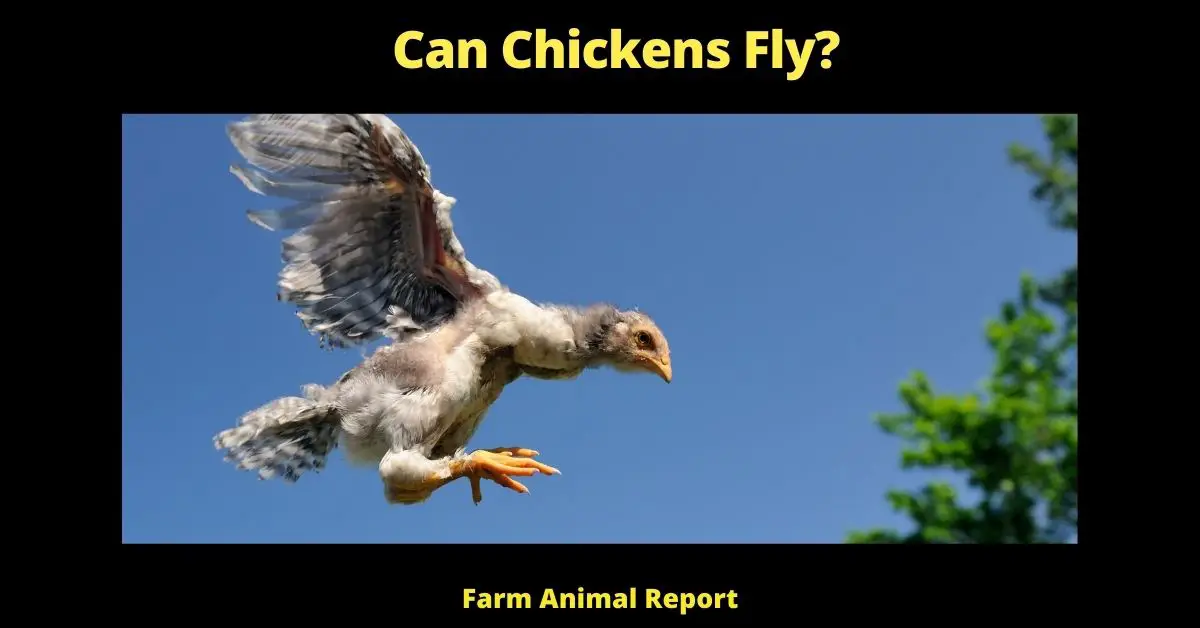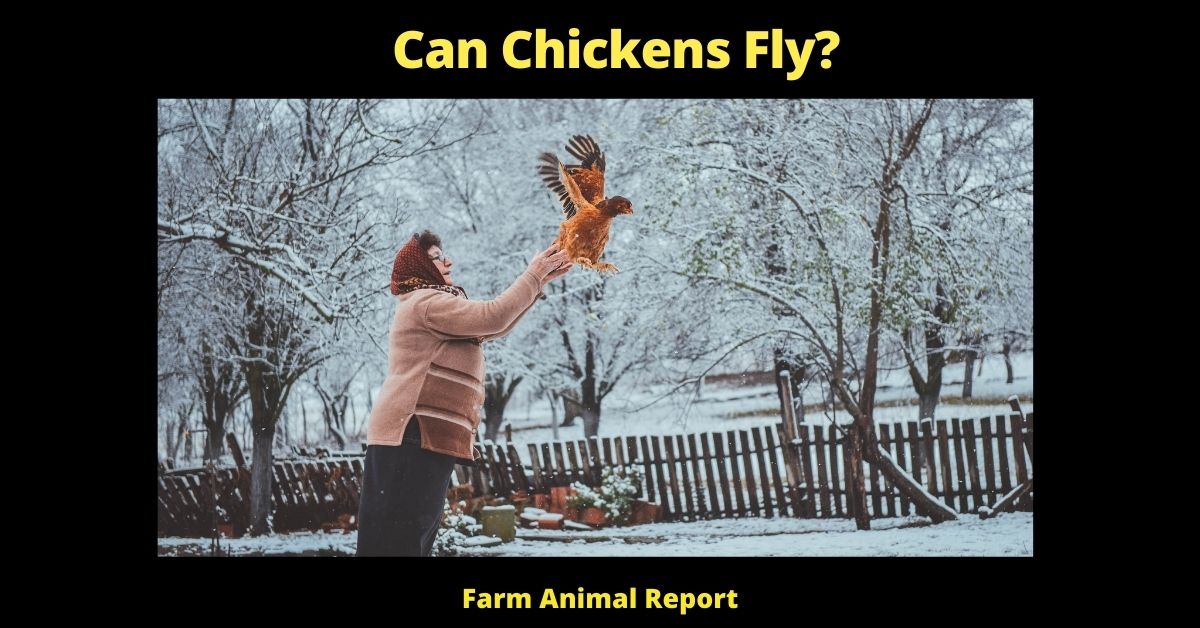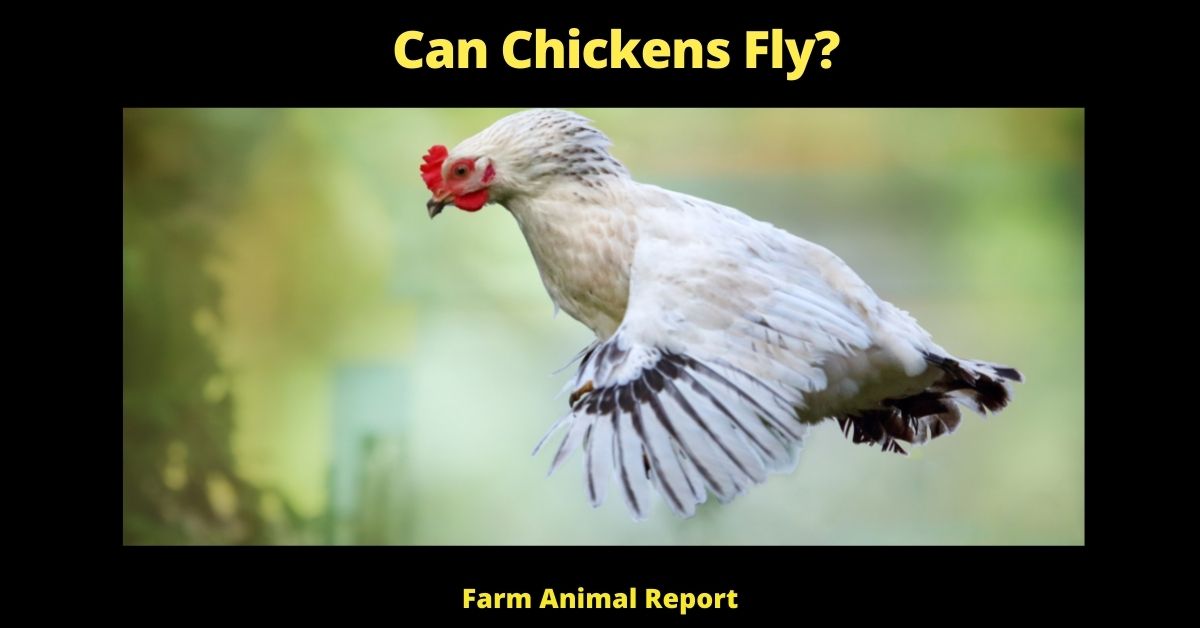Chickens can fly for short distances, they can show a great burst of speed and usually fly approx 50 Yards. Depending on the Breed, weight, and feathers
How Far Can Chickens Fly?
Can Chickens Fly? In order to rank your website for these popular keywords, you need to include them in relevant content on your website. But how do you know if a particular topic is worth targeting? In this blog post, we will discuss how to determine whether or not a keyword is worth targeting for your business. How Far Can Chickens Fly
How Far can Chickens Fly? (chicken breeds)
Chickens are generally very short-distance flyers, but there are a few chicken breeds that can fly long distances. Jump to 12 Ways to Make Money by Chicken Farming **CHARTS**
The longest distance ever recorded for a chicken flying was over 300 feet! However, most chickens only fly ( average approx 50 Yards) as far as they need to in order to get where they’re going.
Check Out Amazon for Educational Resources for Breeding Chickens
How High can Chickens Fly?
Chickens typically only fly to heights that are necessary in order to reach their destination. However, some chickens have been known to fly as high as ten feet off the ground.
How Fast can Chickens Fly?
The average chicken can fly at around 25 miles per hour, but the fastest chickens can fly up to 55 miles per hour. Chickens typically only fly as fast as they need to in order to get where they’re going. Thanks for reading! We hope you now know a little bit more about how far and how high chickens can fly. until next time!
The Qualities of Chicken Flight are very dependent on the Chicken Breed
Today’s Modern Chickens have been bred for Meat, Eggs and not for flight. However, there are some chickens that have been bred for flying and these chickens are typically the lightest of the chicken breeds. The heaviest of the chicken breeds cannot fly at all.
The largest chicken breed can only fly short distances and the smaller breeds can fly long distances. There is also a difference in how high each breed can fly, with the larger chickens not being able to fly as high as their smaller counterparts.
Depending on the breed of chicken
- Modern chickens – not bred for flight, focusing on poultry items meat yeild and egg production
- Selective breeding – some chickens have been bred for flying – each producer is trying to genetically produce large meat producers and layers
- Domestic chickens – the most common chicken that we see today, they are a mix of flying and non-flying breeds
- Lighter Breeds – these chickens are able to fly longer distances due to their need to lighter size and body weight
- Heavier breeds – these chickens have not been bred to fly and in fact, cannot fly at all
- Large breeds – these chickens are the largest of the chicken breeds and can only fly a short distance
- Smaller chickens – these are the smallest of the chicken breeds and can often fly long distances
- Flightless birds – these birds have been bred not to fly or lost the ability to do so through selective breeding, injury or illness.
Major Breeds of Chickens
Some of the major breeds of chickens weight and size are: The lighter ones are able to fly farther and Higher
- Plymouth rock – these chickens weigh between four and five pounds
- Bantam breeds/bantam chickens – these chickens typically weigh between two and three pounds
- Mediterranean breeds – these chickens can weigh anywhere from three to eight pounds
- Red jungle fowl – the males of this breed can weigh up to eight pounds, while the females only weigh
- Rhode island red – these chickens typically weigh between four and six pounds
- Red rangers – these chickens are a cross between the Rhode island red and the barred rock chicken, and they weigh around five pounds. Thanks for reading! We hope you now know a little bit more about how far and how high different breeds of chickens can fly. until next time!

Chickens Wings Anatomy
A chicken wings anatomy consists of primary feathers, secondary feathers, small wings, and new feathers. The primary feathers are the longest and strongest of the chicken’s wing feathers. They make up about 60 percent of the chicken’s total wing surface area. The secondary feathers are shorter and weaker than the primary feathers. They make up about 40 percent of the chicken’s total wing surface area. The small wings are used for balance and steering while in flight. The new feathers are growing in at the base of the chicken’s primaries and secondaries.
A Chickens Bones are Hollow
A chicken’s bones are hollow, which makes them light enough to fly. However, the chicken’s breastbone is not hollow. This means that the chicken cannot fly as high or as far as other birds. The chicken also has a large number of flight muscles attached to its breastbone. These muscles give the chicken power for take-off and flapping its wings.
How Does Blood Flow Help Chickens Fly?
The blood flow in a chicken’s wings helps it to fly by providing oxygen to the muscles. When a chicken flaps its wings, the air pressure inside the wing decreases. This causes blood to flow into the wing and provides oxygen to the muscles.
Can All Chickens Fly?
No, not all chickens can fly. Chickens that have been bred for meat production or egg production often cannot fly. These chickens have been bred to be heavier than other chickens. This means that they do not have enough lift to get off the ground. Some chicken owners clip their chicken wings to keep them from flying. This is done by cutting the feathers on one or both of the chicken’s wings.
What Makes a Chicken Able to Fly?
There are several factors that make a chicken able to fly. These include the size of the wings, the amount of lift, and the bodyweight of the chicken. The size of the wings is important because it determines how much air resistance the chicken has. The amount of lift is determined by how much air pressure is inside the wings. The bodyweight of the chicken is important because it determines how much lift the chicken has. A heavier chicken will have more lift than a lighter chicken. This means that a heavier chicken can fly farther and higher than a lighter one.
- Primary flight feathers – these are the longest and strongest of the chicken’s wing feathers. They make up about 60 percent of the chicken’s total wing surface area.
- Secondary feathers – these are shorter and weaker than the primary feathers. They make up about 40 percent of the chicken’s total wing surface area.
- Small wings – these are used for balance and steering while in flight.
- New feathers – these are growing in at the base of the chicken’s primaries and secondaries.
- Blood flow – this helps to provide oxygen to the muscles when a chicken is flapping its wings.
- Wing clipping – this is done by cutting the feathers on one or both of the chicken’s wings. It is done to keep the chicken from flying.
- Bodyweight – this is important because it determines how much lift the chicken has. A heavier chicken can fly farther and higher than a lighter one.
- Lift – this is determined by how much air pressure is inside the wings. The more air pressure, the more lift the chicken has.
What is the longest recorded flight of a chicken? / Longest Recorded Flight of a Modern Chicken
The longest recorded flight of a chicken has been about 13 seconds. This flight was made by a chicken in Germany. For about 50 Yards
- Burst flight – this is when a chicken flies for a short distance, usually less than 50 yards (46 meters).
- Chicken flight – this is when a chicken uses its wings to fly for longer distances, usually more than 50 yards (46 meters).
- High fences – these are used to keep chickens from flying over them.
- Chicken coop – this is a chicken’s home and where it sleeps.
- Escape artists – these are chickens that are good at escaping from their coops or fences.
- Foot fence – this is a fence that is placed around the perimeter of a chicken coop to keep chickens from escaping.
- Henhouse – this is a chicken’s home that is larger than a coop.
- Higher fence – this is a fence that is taller than a foot fence. It is used to keep chickens from flying over it.
- Flighty chickens / Flighty birds – these are chickens that are scared of everything and tend to fly away easily
More Information for Chicken Owners
If you would like more information about chicken breeds or keeping chickens, there are many resources available. The United States Department of Agriculture (USDA) has a website that provides information about chicken breeds and chicken care. The United Kingdom’s Chicken Breeders Association also has a website with information about chicken breeds and care. There are also many poultry organizations in both the United States and the United Kingdom that can provide you with more information about chickens.
Poultry Organizations
There are many poultry organizations in both the United States and the United Kingdom that can provide you with more information about chickens. Some of these organizations include:
- The American Poultry Association – This organization is dedicated to the promotion of poultry and egg products. They have a website with information about chicken breeds and chicken care.
- The British Poultry Council – This organization represents the poultry industry in the United Kingdom. They have a website with information about chicken breeds and care.
- The National Council – This organization represents the poultry industry in the United States. They have a website with information about chicken breeds and care.
- The Egg Farmers of America – This organization represents the egg production industry in the United States. They have a website with information about raising chickens for eggs.
- The National Turkey Federation – This organization represents the turkey production industry in the United States. They have a website with information about raising turkeys for meat.
There are also many other poultry organizations in both the United States and the United Kingdom that can provide you with more information about chickens. If you want to keep chickens as pets, be sure to do your research so that you can give them the best possible care!

Final Thoughts – Can Chickens Fly? How Far, High, Long
In conclusion, chickens can fly for short distances, but there are many factors that determine how far, high, and long they can fly. Their weight, the type of feathers they have, and their wing surface area all play a role in how well they can fly. If you want to keep chickens as pets, there are many resources available to help you care for them properly.





